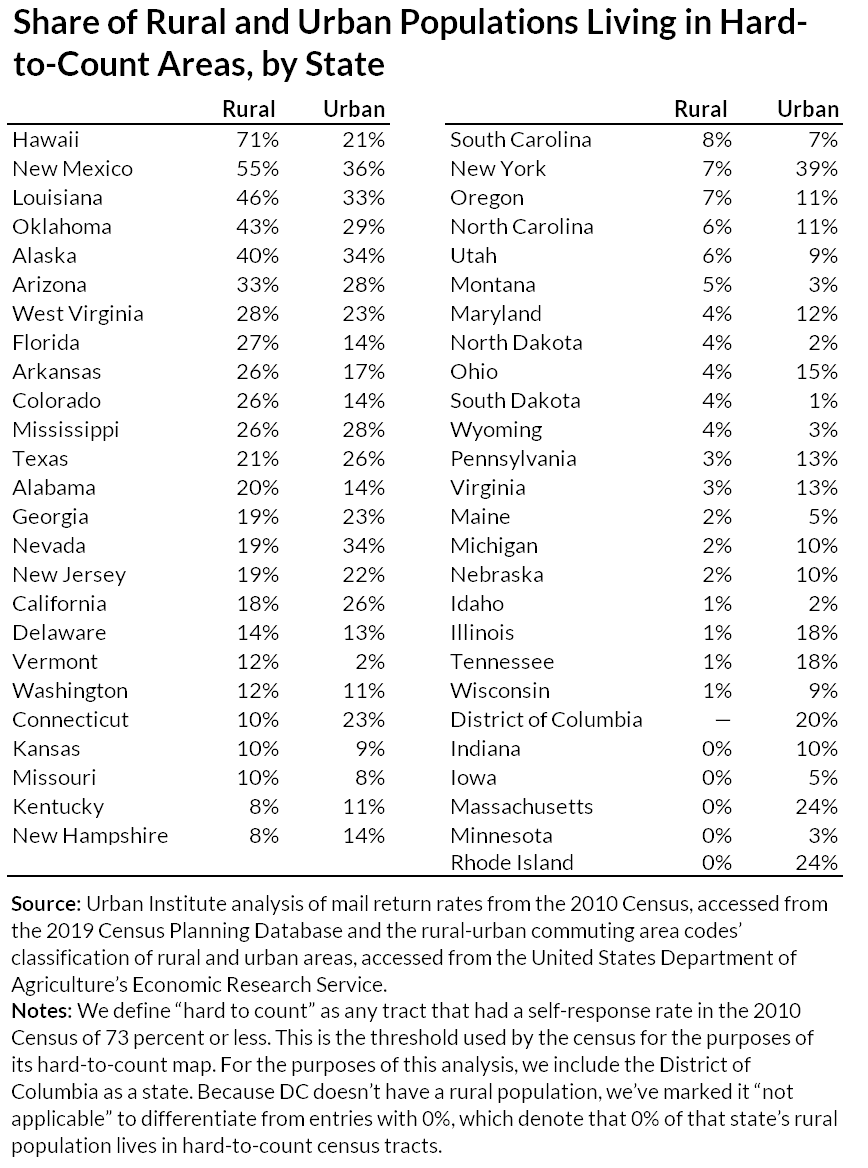
<p>An aerial view of Poconos, Monroe County, Pennsylvania.</p>
In Garden City, Kansas—a small, rural town known for its racial and cultural diversity—the 2010 Census missed 3,500 residents, or 10 percent of the population, according to estimates by local officials (PDF).
With the next census less than six months away, officials in rural communities across the US are worried about another undercount. Leaders from several rural communities shared their concern about another undercount in 2020 at an American Communities Project briefing earlier this month.
They have good reason to be worried; getting an accurate census count is critical for all communities. Population counts from the 2010 Census were used to determine the allocation of approximately $900 billion in federal funding from more than 300 large federal programs in the 2016 fiscal year—$30 billion of which was allocated to federally funded programs that focus exclusively on rural areas (PDF).
Census counts are also used to ensure fair political representation, to attract private business investment, and to guide local, state, and federal policy decisions.
Rural areas shouldn’t be left out of the conversation around census undercounts
Much of the conversation around census undercounts focuses on urban areas, families with young children, people of color, and households with lower incomes.
This focus is supported by national numbers, which suggest that rural communities might be easier to count than urban ones: 13 percent of the rural population lives in hard-to-count areas (defined as areas with a 73 percent or less mail response return rate in the 2010 Census), compared with 20 percent of urban residents.
But national averages obscure important variation at lower levels of geography. In 21 states, the share of the rural population living in hard-to-count areas exceeds the share of the urban population living in hard-to-count areas. In rural areas in New Mexico and Louisiana, approximately half of residents live in a hard-to-count census tract. In rural Hawaii, that share is nearly three-quarters.


Why rural communities can be hard to count
Some challenges to a complete census count are shared across rural and urban communities.
Hispanic, Black, and Native American populations tend to be undercounted in each census, so places with large shares of people of color face an increased risk of an undercount. Communities with large shares of households with lower incomes, young children, and English-language learners also face this increased risk.
But rural areas face unique challenges as well. The remoteness of many rural residents, whose homes can sometimes be hidden from main roads and who may not use conventional city-style addresses, can make it more difficult for enumerators to find residences and get an accurate count.
Many rural areas with agricultural economies are also home to large numbers of migrant and seasonal farmworkers, who may not get counted during the census in April (PDF).
Changes to the 2020 Census may also increase the risk of undercounting in rural areas.
For the first time, the census will add a digital response option, and it will prioritize online response (PDF) in places with access to internet. Rural communities without broadband or high-speed internet access may be less likely to respond. As of 2017, more than 12 million people living in rural areas do not have access to broadband internet, according to estimates from the 2013–17 American Communities Survey. That total accounts for around 26 percent of the rural population.
Steps to ensure a more accurate count
Because of these procedural changes, preparation in rural areas is critical for the 2020 Census. To ensure an accurate count, rural leaders should consider the following steps:
- Become a census partner to increase awareness of the importance of an accurate count by working with recognized community leaders, such as faith-based and business leaders.
- Use data to understand your community and target your outreach efforts, starting with the interactive map of historically hard-to-count areas.
- Provide safe, secure internet access in community spaces, such as post offices and libraries (PDF), for people who do not have home internet access.
- Partner with schools or employers to reach traditionally hard-to-count populations so that people can respond on site though dedicated technology and with the support of on-site translators.
Traditional indicators of hard-to-count areas (such as the mail return response rate from the 2010 Census) are only proxies for how communities may respond to the option of a digital response next year.
Whether the new online-first approach of the 2020 Census results in a more accurate count remains to be seen. But limited access to broadband and high-speed internet in many rural areas may increase the risk of undercounting.
Leaders in rural areas that have struggled with undercounting or that have limited internet access should take steps to plan for the 2020 Census, ensuring that all rural residents are counted.
Let’s build a future where everyone, everywhere has the opportunity and power to thrive
Urban is more determined than ever to partner with changemakers to unlock opportunities that give people across the country a fair shot at reaching their fullest potential. Invest in Urban to power this type of work.